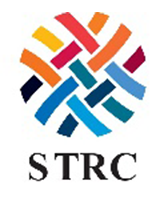Dr. Jan Beringer In addition to quality, trends and fashion aspects, the functionality and comfort of products also play an important role in clothing and home textiles. Textile materials and systems for a wide variety of product areas such as everyday life, sports, workwear or personal protective equipment (PPE) must fulfill their function and at […]
Author: STRC Admin
Katelyn Lee
Katelyn Lee works in Textile Chemistry Research at Cotton Incorporated. She has been with Cotton Incorporated since 2007. She managed day-to-day operations in the digital printing and garment wet processing laboratories for five years. Her present role as a Textile Chemist focuses on conducting applied research projects to improve performance in enzymatic processing, dyeing, and […]
UV Protection Factor as a Function of Cotton Fabric Construction, Dyeing, & UV Absorber Application
Katelyn Lee UV absorbers have a long history of effective application in the textile industry. Unfortunately, many potential users have misconceptions about the performance and durability of these products. This presentation will compare the UPF ratings with vs. without the addition of UV absorber for knit and woven fabrics with various weights, constructions, and dye […]
Noble’s Planet Positive Initiative
Lou Protonentis Noble Biomaterials delivers an innovative approach to antimicrobial fabric performance. Ionic+ antimicrobial and odor control technology brings two new products to market in 2024. A first-of-its-kind botanical topical fabric treatment using a new EPA-registered citric formula, and Ionic+ Pro, the most advanced non-metal yarn technology for professional and industrial applications.
Louis T. (Lou) Protonentis
Louis T. (Lou) Protonentis began his textile career in his mid-teens working in a local mill weighing up dye in the drug room. His initial formal education was in Pre-Law with a degree in Administration of Justice from Guilford College. After being accepted at law school, he decided to instead enter the work force and […]
Rick Stanford
Rick Stanford is the Vice President of Global Business Development for Baldwin Technology’s Textile Division. He and his wife Lisa reside in Rock Hill, South Carolina. They have one daughter. Rick is a graduate of Georgia Institute of Technology with a degree in Industrial Management. He has more than 30 years in the textile industry. […]
The transition from pad application to digital spray finishing and its positive effect on the environment and the bottom line
Rick Stanford Brands and Retailers and consequently textile manufacturers are under tremendous pressure from consumers to provide products that are manufactured in a sustainable way. Baldwin Technology will present case studies how transitioning from pad application to spray finishing saves water, chemistry and significantly lowers the carbon footprint in the finishing department.
Ludwig Huber
Ludwig was born in 1988 in Bavaria, Germany and studied chemistry and biology with focus on teaching. After his master thesis on the solvatochromism of indigo dyes he started in 2015 his doctorate in organic chemistry in the working group of Dr. Henry Dube at LMU in Munich , where he focused on the development […]
Unlocking the Potential of Biobased Materials for Reduction of Environmental Impact
Dr. Ludwig Huber The upcoming economic transformation towards a more sustainable use of materials andenergy to decouple economic growth from greenhouse gas emissions will be anoutstanding challenge for the next decades. Key drivers influencing these ambitions fortransition is customer expectations, approaching regulations, and the intrinsic motivationto design state of the art of sustainable chemistry. In […]
Dr. Jan Beringer
Dr. Jan Beringer is the Senior Scientific Expert for Hohenstein. In this role, he uses an interdisciplinary approach to develop the comfort, fit and workmanship of garments, functionalization of fabrics, textile UV protection and textile reprocessing. He has extensive knowledge in textile and fiber chemistry, functionalization, nanotechnology, coating and finishing and clothing physiology. Dr. Beringer […]
